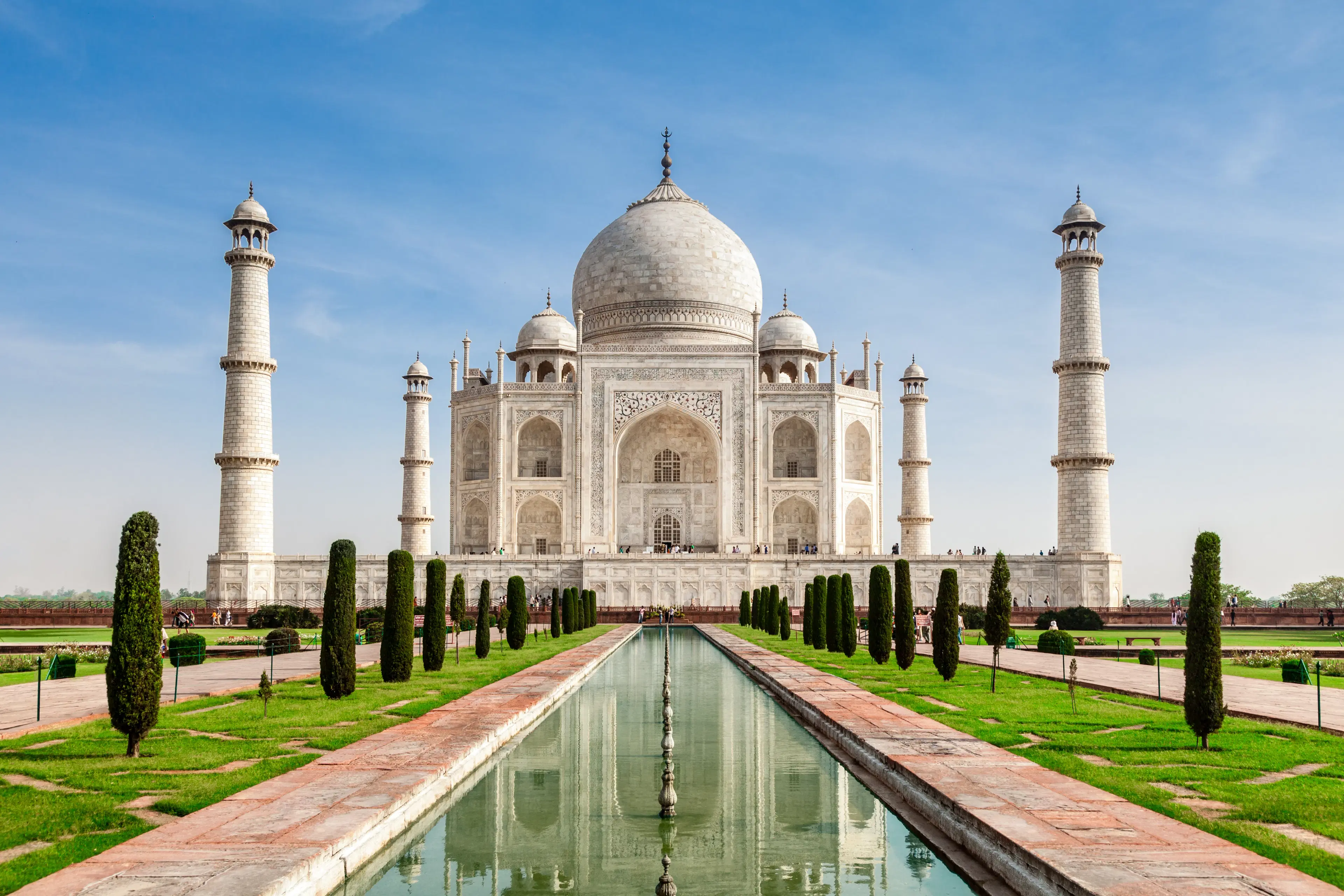
Flights
•03 min read

The Taj Mahal, a mesmerizing masterpiece of Mughal architecture, stands as an iconic landmark in India and a symbol of eternal love. Recognized as a UNESCO World Heritage Site, it draws millions of visitors to Agra every year, inviting travelers to witness a blend of history, cultural significance, and breathtaking artistry. This blog answers frequently asked questions about the Taj Mahal, revealing its rich history, heritage status, and cultural importance while inspiring you to experience its awe-inspiring charm.
The Taj Mahal was inscribed as a UNESCO World Heritage Site for its outstanding universal value. Its impeccable beauty, intricate design, and emotional connection to a timeless love story meet the stringent criteria that celebrate global cultural heritage. Such recognition distinguishes the monument as not just a piece of architectural brilliance, but also a symbol of the richness of India’s past.
Located in Agra, Uttar Pradesh, the Taj Mahal is a centerpiece among other renowned UNESCO heritage sites in India. It connects deeply with a larger cultural tapestry, showcasing the legacy of Mughal artistry and the historical significance of regional landmarks.
At the heart of the Taj Mahal is a poignant love story between Emperor Shah Jahan and his beloved wife Mumtaz Mahal. Constructed between 1632 and 1653, this mausoleum was built as a memorial to immortalize love—a tribute that has resonated through centuries, capturing the hearts of countless visitors.
The monument is a prime example of Mughal architecture fused with Indo-Islamic design. Crafted from pristine white marble, every inch of the Taj Mahal is adorned with intricate carvings and lush, symmetrical gardens. This artistic synergy not only aligns with traditional design but also evokes a sense of refined luxury and comfort for every visitor.
Did You Know?
It is believed that thousands of artisans worked for over two decades to complete the Taj Mahal, making it one of the most labor-intensive architectural wonders in history.

The Taj Mahal epitomizes the beauty of eternal love, loss, and remembrance. Its graceful silhouette not only captures the heart with its elegance but also symbolizes a collective memory enriched by centuries of history. This monument has come to represent the enduring spirit of love that transcends time and geography, making it a treasured heritage symbol in India.
The legacy of the Taj Mahal continues to inspire modern architectural endeavors across India. It has paved the way for innovative art forms and stands as a beacon for architects and designers fascinated by Mughal craftsmanship. Additionally, the monument has played a crucial role in turning Agra into a vibrant hub for exploring Mughal-era art, home to many other historic treasures.
To truly appreciate the magic of the Taj Mahal, planning your visit can make all the difference. Early mornings and full moon nights are among the best times to experience its serene beauty under soft, natural lighting. Remember to adhere to the ticketing guidelines and entry rules to ensure a comfortable and hassle-free tour of this iconic landmark.
The allure of Agra extends beyond the Taj Mahal. Venture to explore surroundings like Mehtab Bagh, where the reflection of the monument in the Yamuna River creates a picture-perfect scene, or visit Agra Fort and Fatehpur Sikri to complete your cultural journey. Together, these sites contribute to a comprehensive exploration of Agra's historical and artistic heritage.

Yes, the Taj Mahal was designated as a UNESCO World Heritage Site in 1983 for its outstanding universal value as a masterpiece of Mughal architecture and cultural significance.
The five key points include its symmetrical design, the stunning central dome, the intricate marble inlays, the meticulously laid out surrounding gardens, and its captivating reflection in the Yamuna River.
The Taj Mahal is classified as a cultural heritage site, a testament to the artistic and architectural achievements of the Mughal era.
India proudly houses 40 UNESCO World Heritage Sites, with the Taj Mahal being one of the most renowned among them.
The Taj Mahal was constructed by Emperor Shah Jahan in memory of his cherished wife Mumtaz Mahal, symbolizing their enduring love through its majestic and timeless design.
Traveling to witness the grandeur of the Taj Mahal is more than just a sightseeing trip; it’s an opportunity to embrace a rich legacy of cultural heritage and artistic excellence. Whether you are a wanderer seeking a soulful journey, a planner looking for a comprehensive exploration of historical marvels, a professional needing a serene break, or a luxury seeker desiring premium travel experiences, the Taj Mahal delivers an unforgettable encounter with India's illustrious past. When booking your travel to Agra, consider the seamless service offered by Tata Neu. With reliable flights exclusively from Air India and Air India Express, you not only experience premium travel but also earn NeuCoins on your bookings (1 NeuCoin = 1₹ saving). These rewards, along with benefits like trip insurance add-ons such as FlyCan and FlyNxt, priority check-in, and lounge access on select flights, simplify your travel planning, making your journey as rewarding as your destination.
Every visit to the Taj Mahal deepens your connection to India’s rich history, artistic spirit, and the culture that continues to inspire generations. As you step into this realm of heritage and romance, you're invited to experience travel that is both enriching and unforgettable.